Pros and Cons
First, let’s look at the features of white in wall decoration:
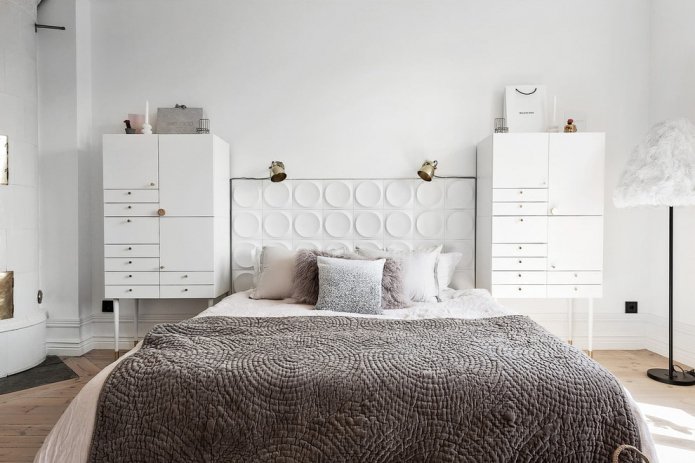
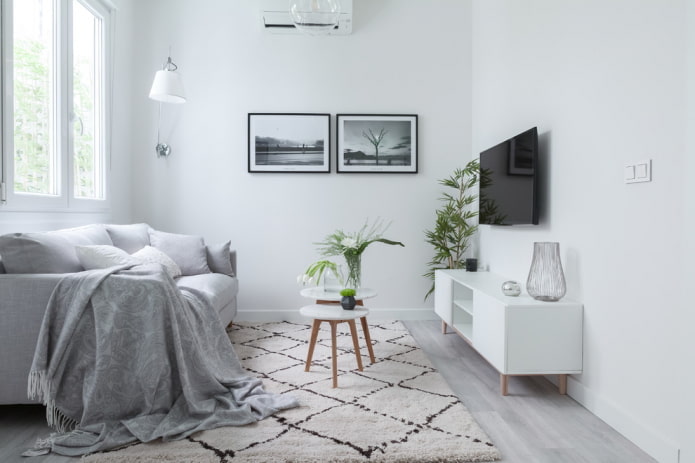

Shades of white
White has several incarnations. Snow-white with blue and green tints is more suitable for rooms with windows facing the south. Smoky white looks cool, as it has a gray undertone, but at the same time gives the interior coziness and tranquility. Unfortunately, in dark rooms on the north side, smoky seems dirty white, so its use in poorly lit rooms is undesirable. Cold shades also include snow (perfect white), which adds brightness to the room.
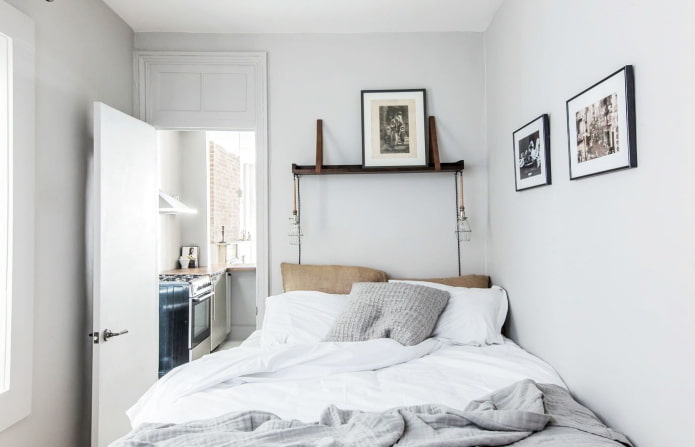
The photo shows a small bedroom with white walls that visually expand the space.
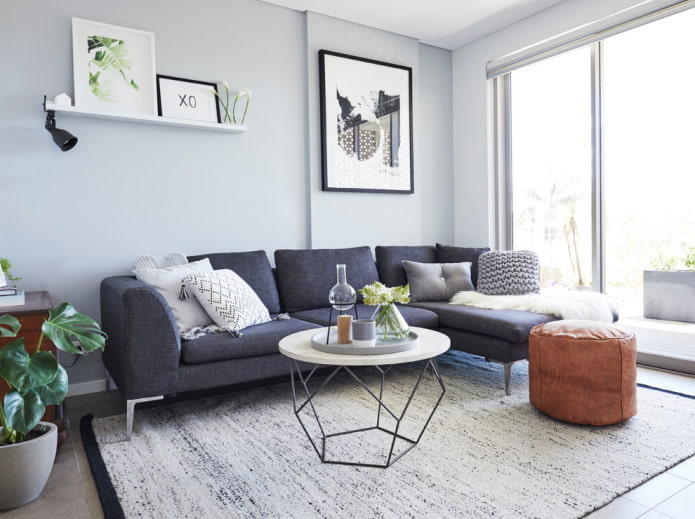
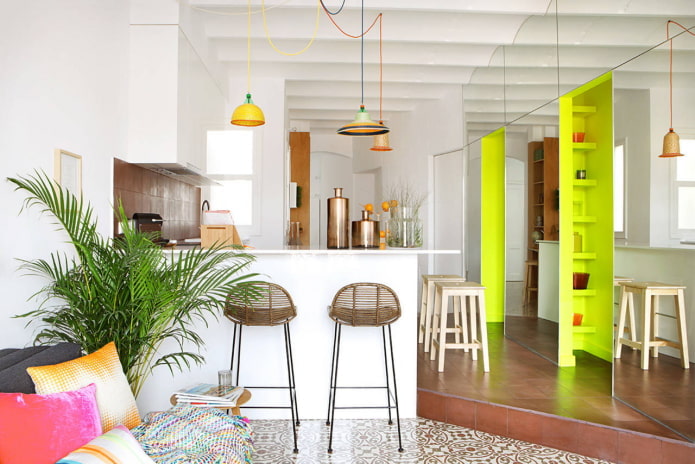
Warm tones include white walls with yellow and pearlescent shades: the color of “natural linen”, cream, “seashell”, “honeydew”. Cream (milky) shade of walls is especially popular. The temperature of the ivory color depends on the lighting, but its nobility remains unchanged.
Warm tones are most suitable for classic and rustic interiors, and cold ones – for modern, industrial and minimalist ones.
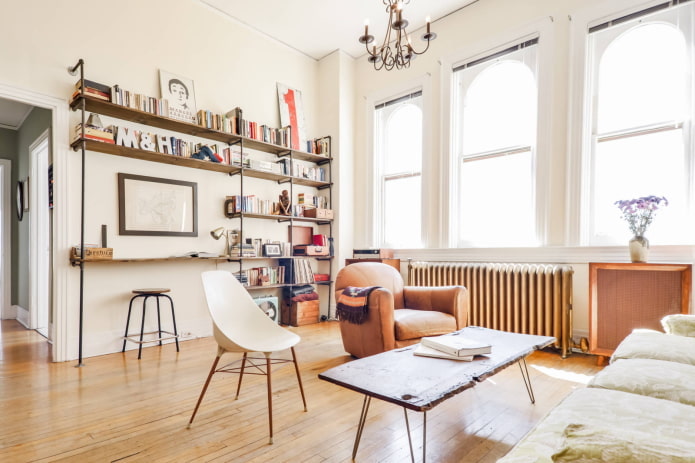
The photo shows a living room-library in warm cream tones.
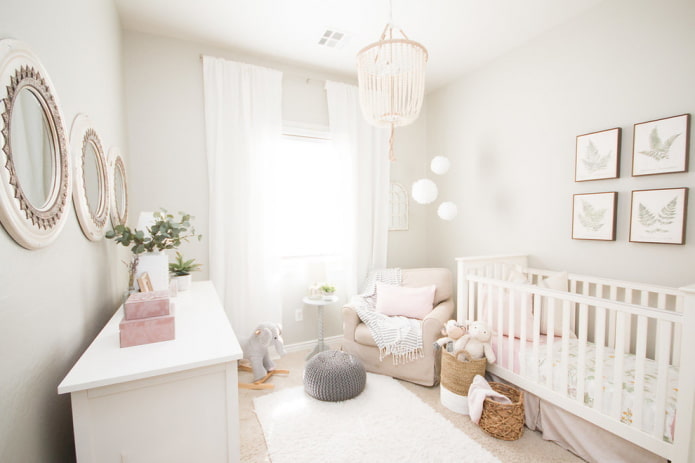

Best combinations
White walls are universal, so they look harmonious with most shades. Serious and uncompromising natures will like a monochrome setting – a contrasting combination of black and snow-white. This is a traditional option that gives the atmosphere austerity and respectability, even if little money was spent on the renovation.
Nature lovers will like a combination of pearl, green and wood. This solution is relevant for the Scandinavian and eco-styles: light walls bring to the forefront furniture and decor made from natural materials.
The milky color also serves as a magnificent background for bright details: yellow accessories make the atmosphere joyful and sunny, and red ones emphasize the boldness and originality of the apartment owner.
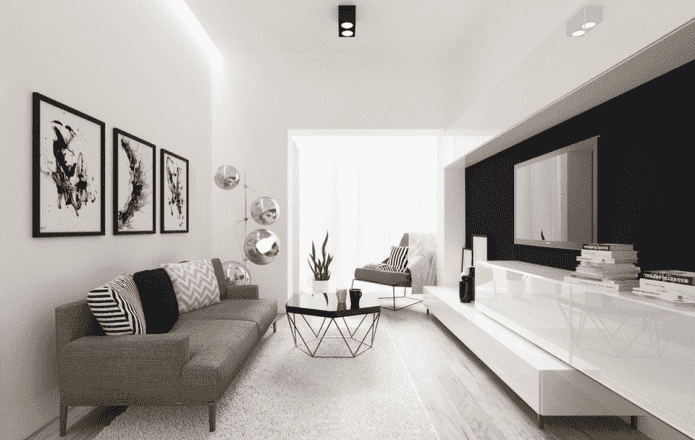
The photo shows a living room with white walls and a black accent area in the niche for the TV.
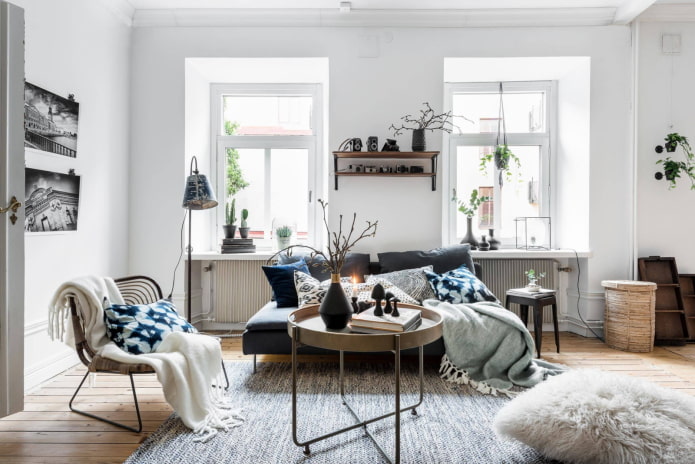
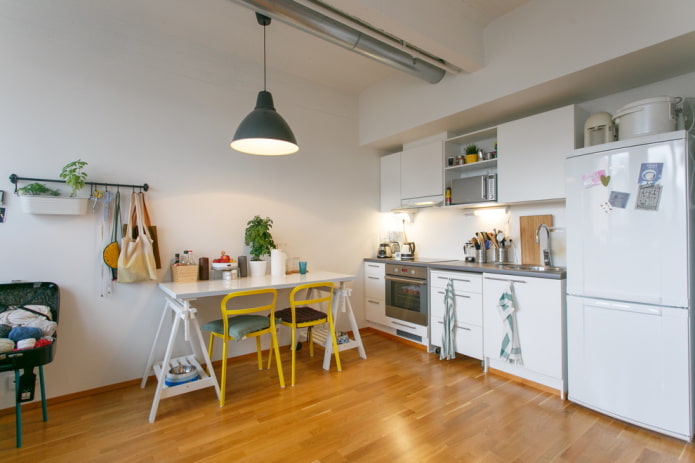
White walls in the interior look great in combination with calm beige and luxurious gold, giving the living room or bedroom sophistication.
Cold blue, light blue and mint tones are suitable for rooms in a marine style, as well as for modern interiors that you want to add freshness and airiness.
A combination of white and gray is considered a winning one: this option never goes out of fashion, and it is easy to dilute with color spots.

The photo shows a living room with white walls that recede into the background, highlighting the original furniture and a magnificent fireplace.
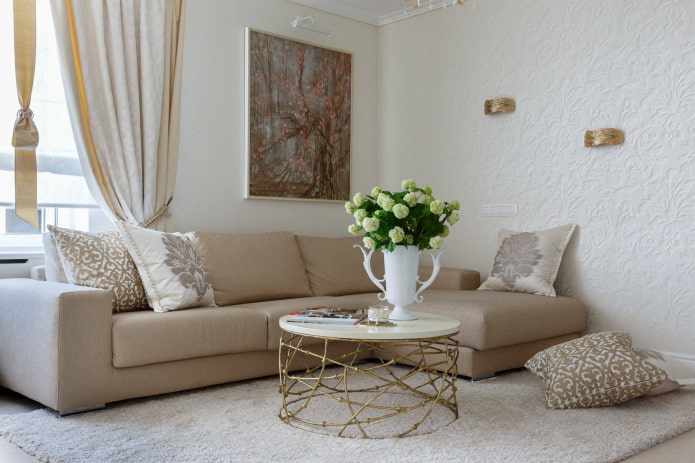

What curtains are suitable?
Another undeniable advantage of white walls in the interior is their versatility. You can change the textiles – curtains, bedspreads, pillows – and the room will be transformed without much expense.
When buying curtains, it is worth considering the rule of three colors. Since white is the main color of the room, you need to choose curtains either as an additional shade (it takes up 30% of the room) or as an accent (10%).
The design of the curtains depends on the chosen direction: multi-tiered curtains will fit into a classic style, and laconic ones – into any modern one. As for patterns: they are appropriate if the environment is not active, that is, white wallpaper or furniture upholstery should not contain ornaments. A successful pair – identical curtains and pillows.
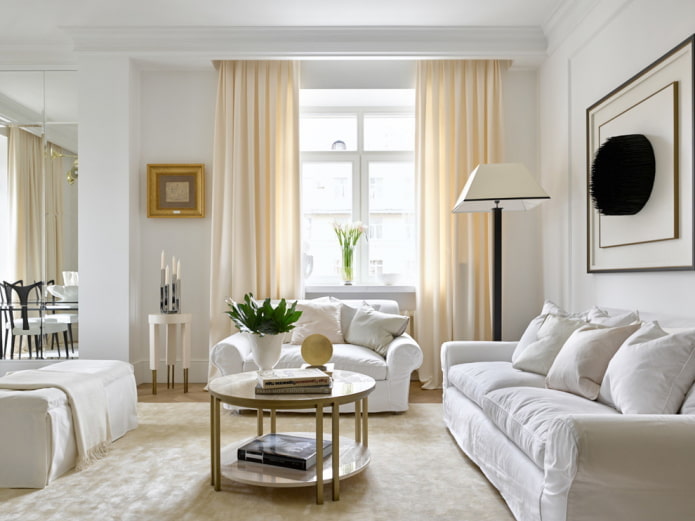
In the photo, soft beige curtains soften the bright whiteness of the living room.
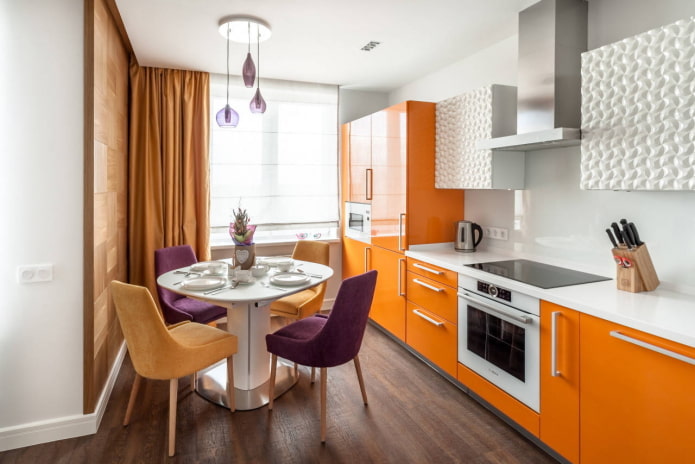
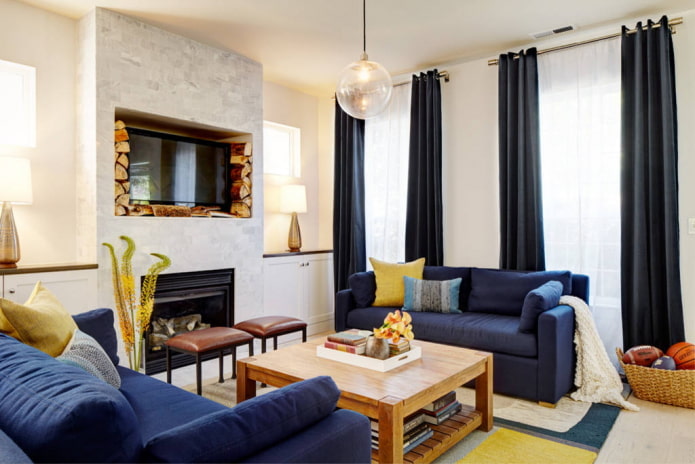
A great option is dark, single-color curtains in rich colors that will make the interior lively and modern.
If you hang curtains that are identical in color to the walls, this will add light and sophistication, but there is a risk of creating a nondescript interior. This solution looks impressive if the rest of the room is decorated in white tones.
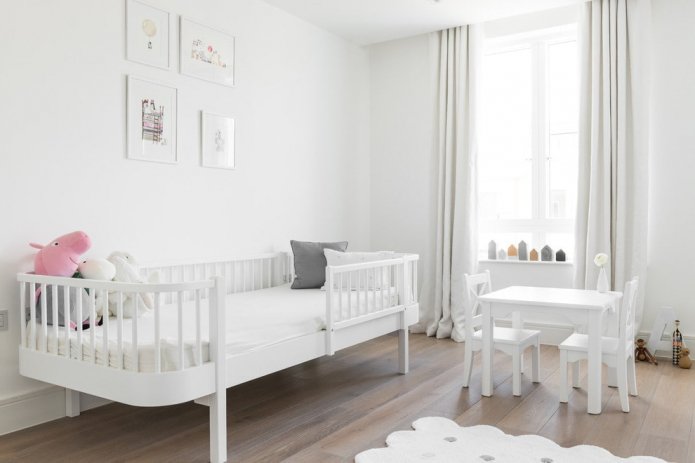
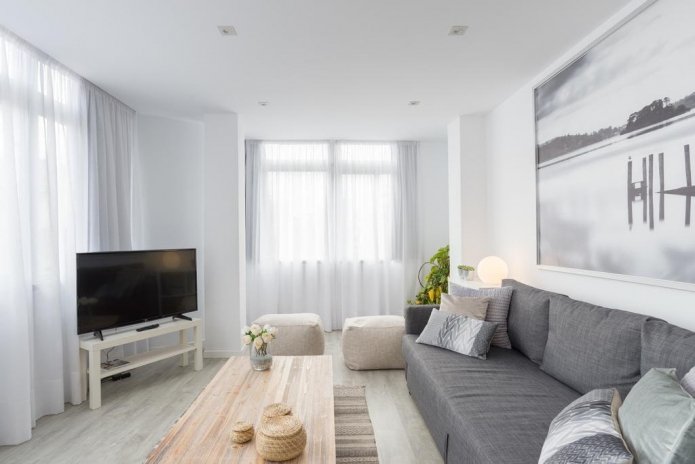
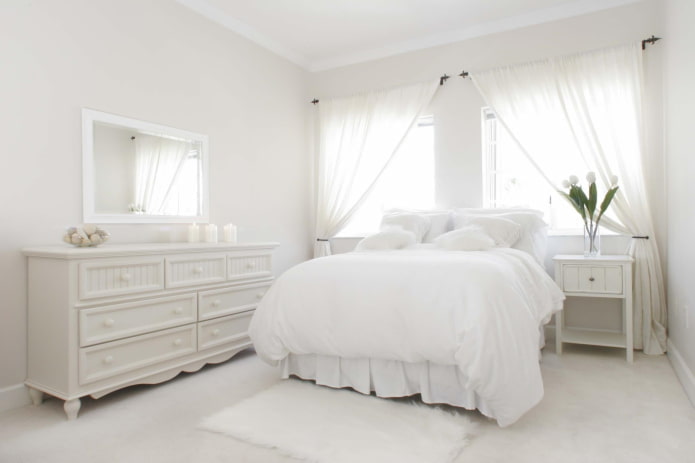
On photo of a small bedroom with pure white walls, light textiles and furniture in the same tone.
Finishing options
A snow-white interior involves a choice of materials for every taste, but how can you make white walls in an apartment or house yourself?
The most budgetary and popular solution is emulsion paint. It is easy to care for, and it is also easy to apply, in one or two layers. The texture can be glossy (has a cold shine, but is easier to clean) or matte (better hides wall imperfections). If the surface gets dirty, it can simply be repainted. The only drawback is that the walls must be smooth, perfectly prepared.
Another design option is decorative plaster. It makes the interior more diverse, but it is more difficult to care for a textured surface. In addition, the next time you repair, the coating will have to be scraped off to the base.
Ceramic tiles are traditionally chosen for the bathroom. Gloss reflects light, so it is an ideal choice for small bathrooms. The tile is environmentally friendly, durable and absolutely not afraid of moisture (which cannot be said about the seams). It is also suitable for a kitchen apron, protecting the walls from dirt.

The photo shows painted white walls turning into a white attic ceiling. The kitchen apron is finished with hog tiles with dark grout.
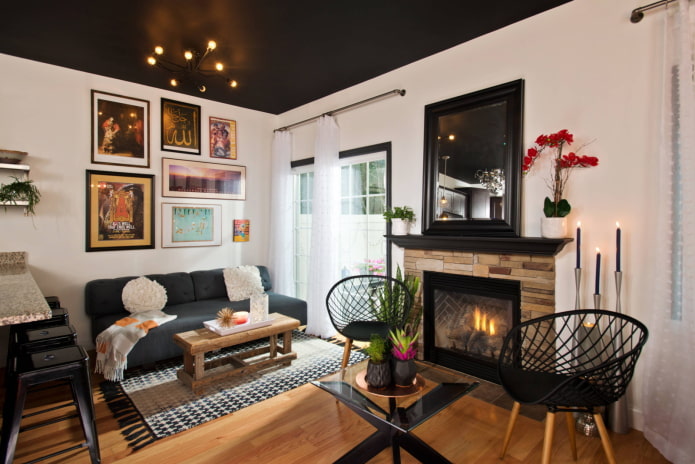
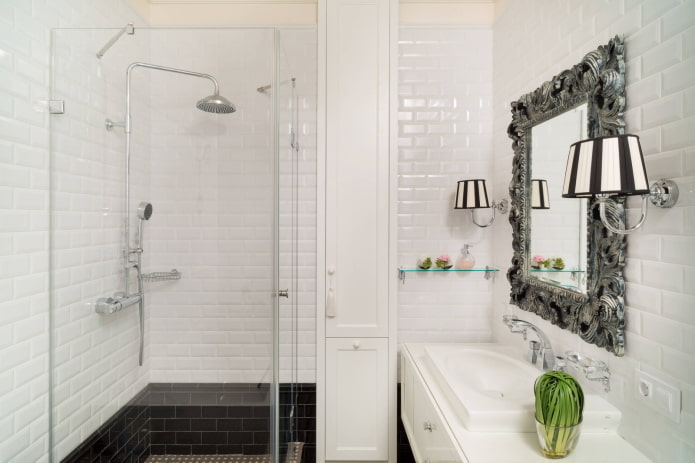
A relatively inexpensive finishing method is paintable wallpaper (non-woven, vinyl, paper). They hide the imperfections of uneven walls well. But they need to be glued end to end so that the surface looks perfect.
Brickwork never goes out of fashion. It is appropriate not only in the loft style, but also in Provence, fusion and Scandi. Several methods are suitable for creating a white brick wall:
- paint a natural terracotta wall, having previously cleaned it from salts and primed it (it will be almost impossible to remove the paint later);
- form bricks using plaster, then paint;
- buy gypsum tiles and glue them.
A less popular, but attractive way to decorate walls is wood: clapboard or panels. Wood is used to decorate not only summer cottages, but also apartments when you want to add a touch of country atmosphere to the interior.
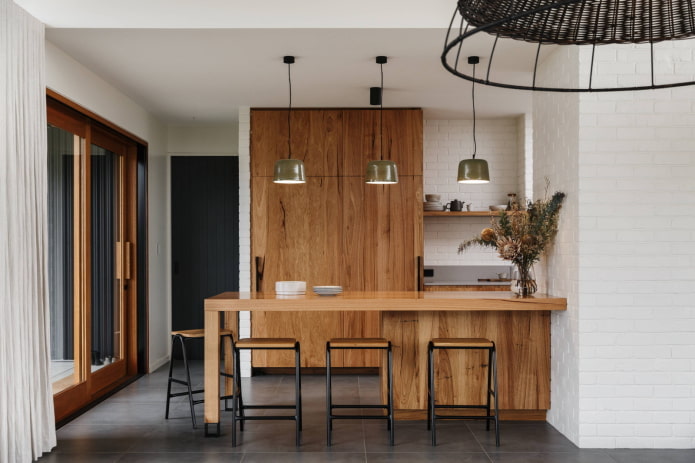
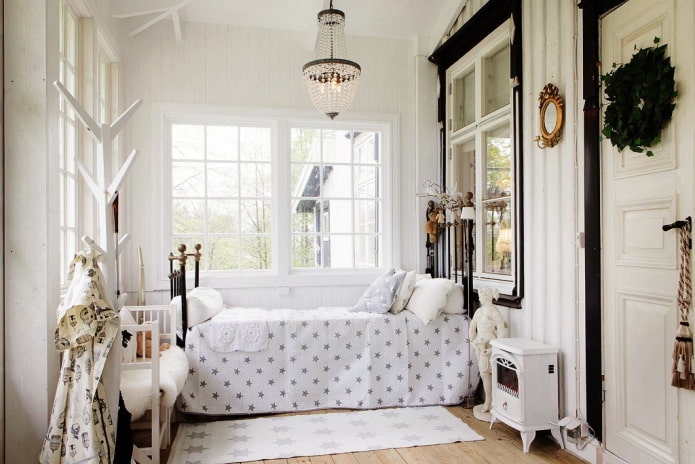
What style is best for decoration?
White walls in a house or apartment are, first of all, universal. They add nobility to the classic style, perfectly combining with rich textures, luxurious furniture made of expensive wood and stucco on the ceiling.
White walls are the hallmark of a Scandinavian-style apartment. They are supported by hand-made decorative elements, budget furniture, cozy textiles and house plants.
White walls in a loft-oriented interior add spaciousness to the room. In such industrial apartments, it is important to leave a light background: deliberately rough filling (furniture and decor) should be balanced by light, unobtrusive finishing.

The photo shows a loft-style living room-study. The white walls serve as a background for contrasting furniture, and the floor color emphasizes the brutality of the setting.
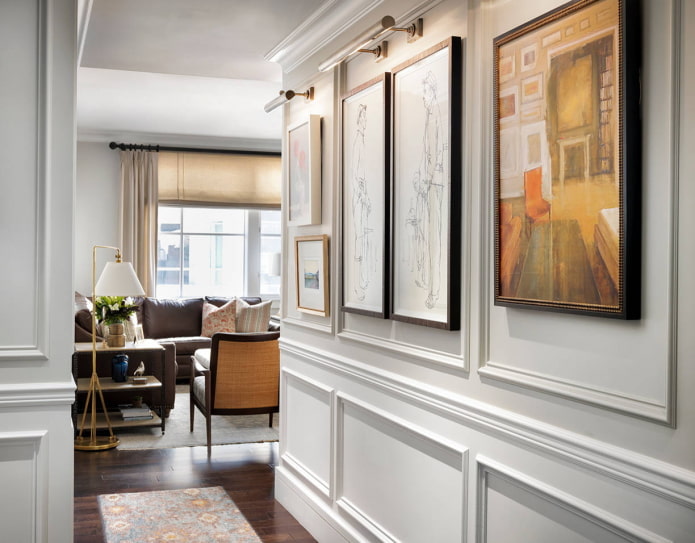
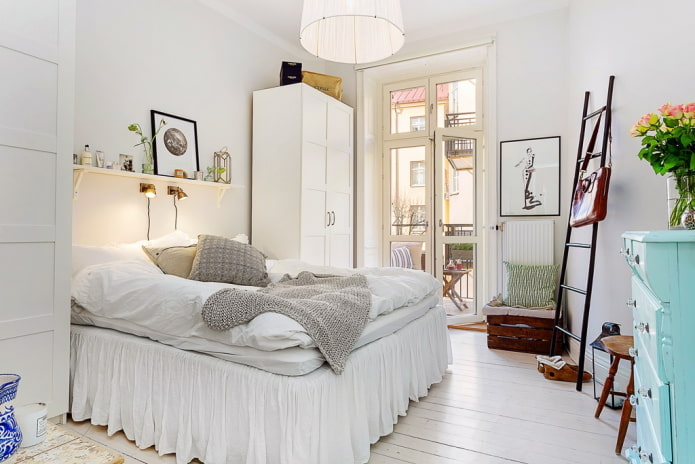
The milky shade invariably remains a favorite for the shabby chic style, which is appreciated by romantic individuals. Antique furniture, scuffs, fresh flowers and light textiles create a feeling of airiness and at the same time homeliness.
In the high-tech style, white walls remain the most popular color. With the help of different color backlighting, a snow-white room can change its appearance depending on the needs of its owner.
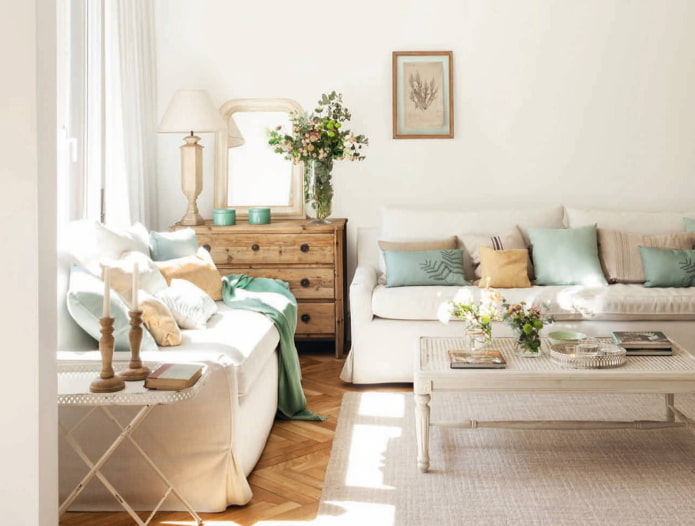
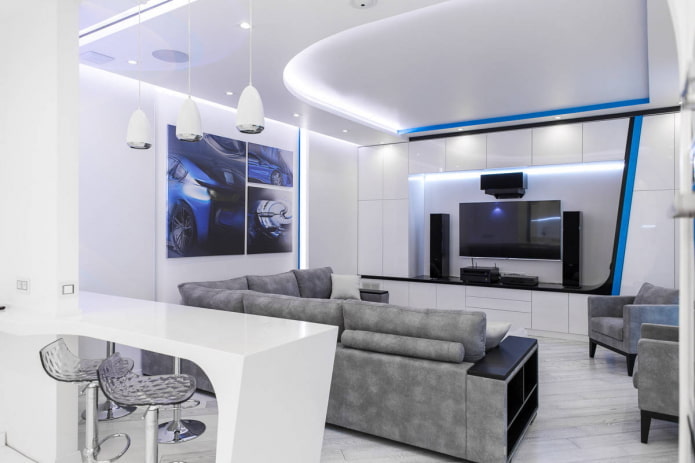
How does it look in the interior of rooms?
It is the white walls that help to bring together “incompatible” interior items.
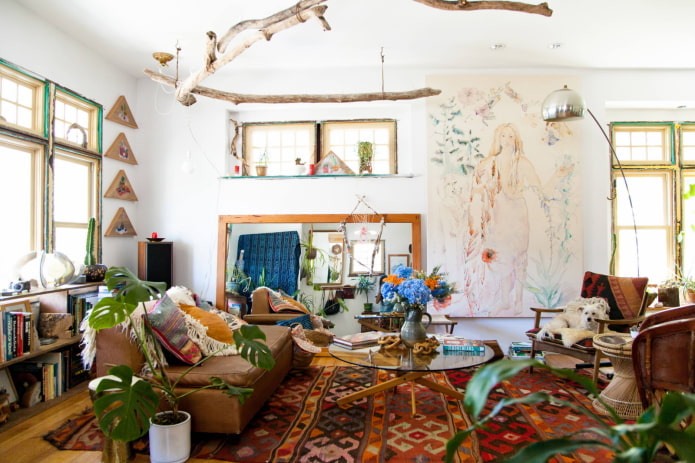
The photo shows a living room in the fusion style, where things with history are united by one common background. Wooden, terracotta and turquoise details look interesting on it.
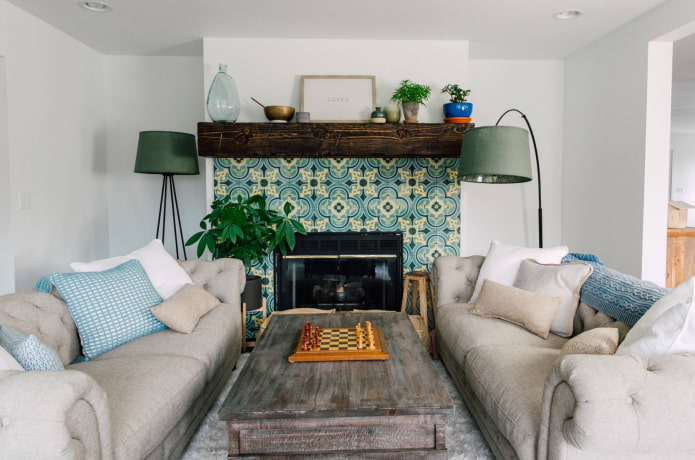
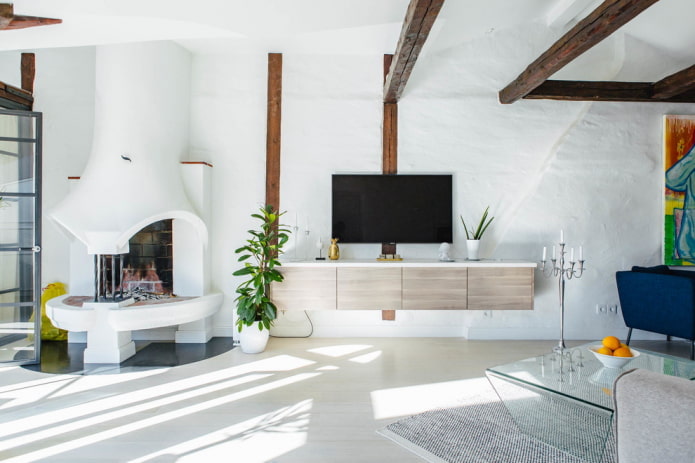
Also, the snow-white background emphasizes bright elements, and contrasting details look even more saturated. It adds graphicness and severity to black and brown colors.
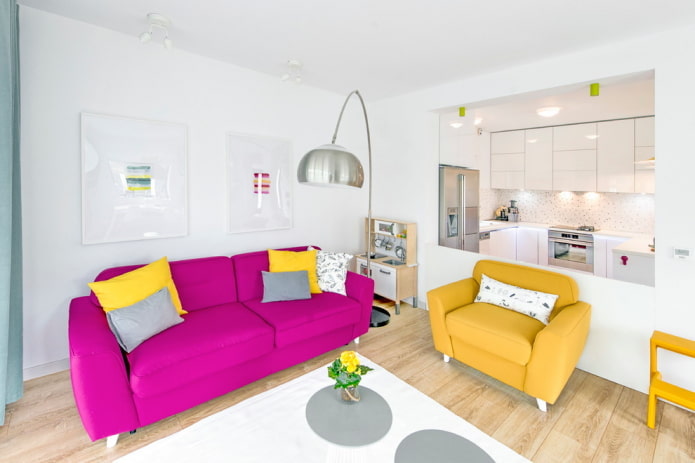
The photo shows a living room with a neutral background, which makes the furniture upholstery visually brighter.
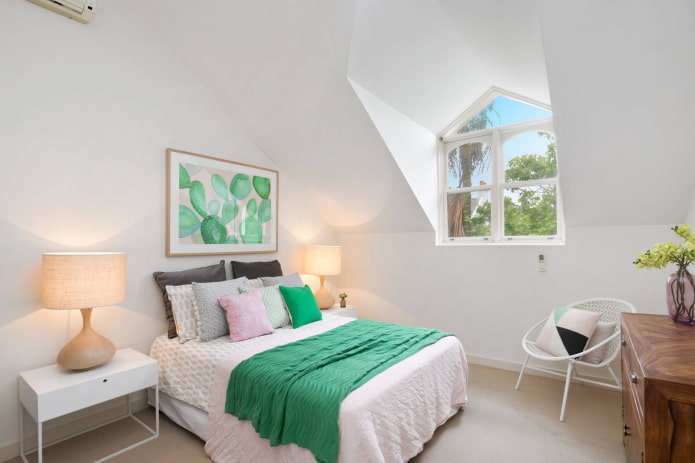
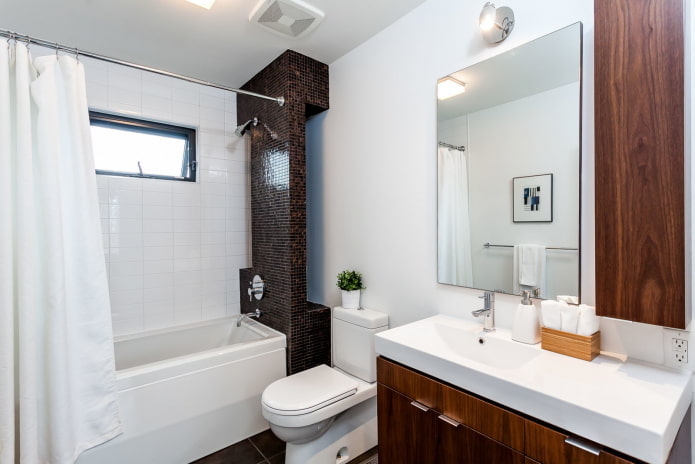
White walls are appropriate both in a spacious apartment and in a small studio, where there is almost no empty space. It multiplies the light and visually erases the boundaries between the walls and the ceiling.
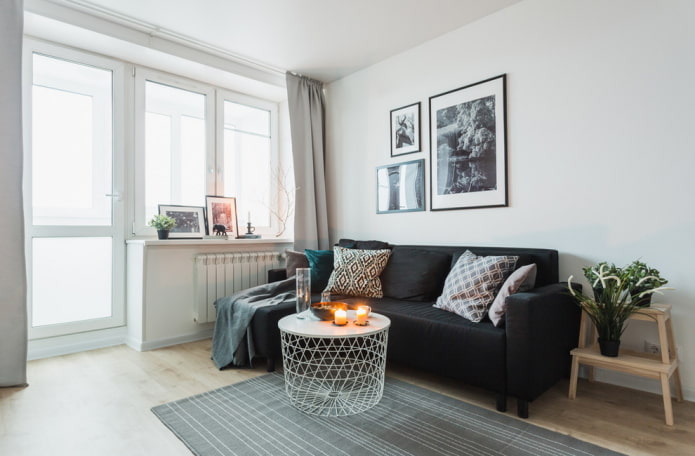


Now reading:
- 17 Stylish Ways to Fold Napkins for Your Holiday Table
- Modern Interior Style: Photos and Complete Design Guide
- Mirrors in the interior: 90+ photos and original ideas for different styles.
- Pros and cons of metal roofing: what should you know before buying?
- Elegant Mercedes CLS: A Fusion of Style and Performance